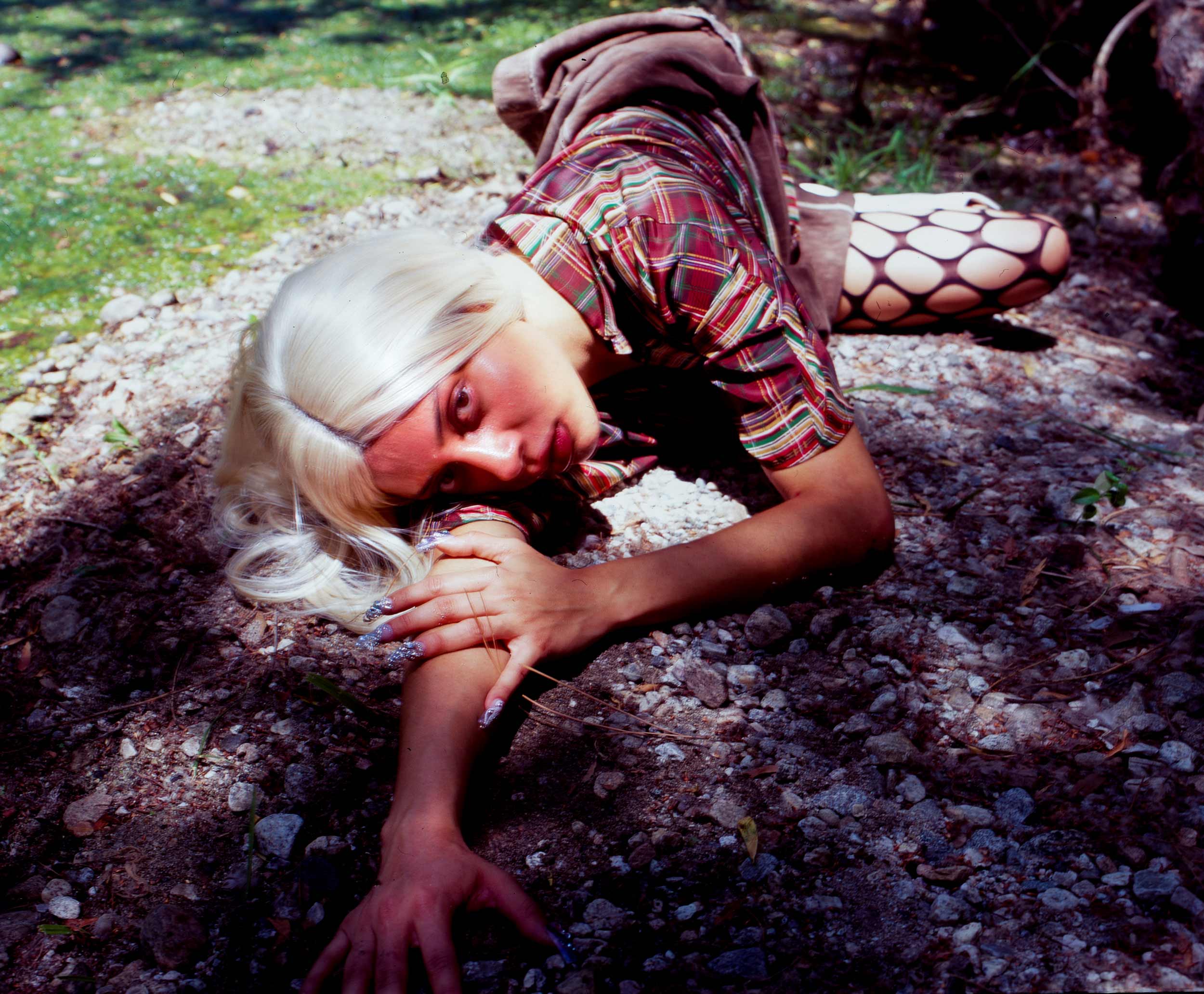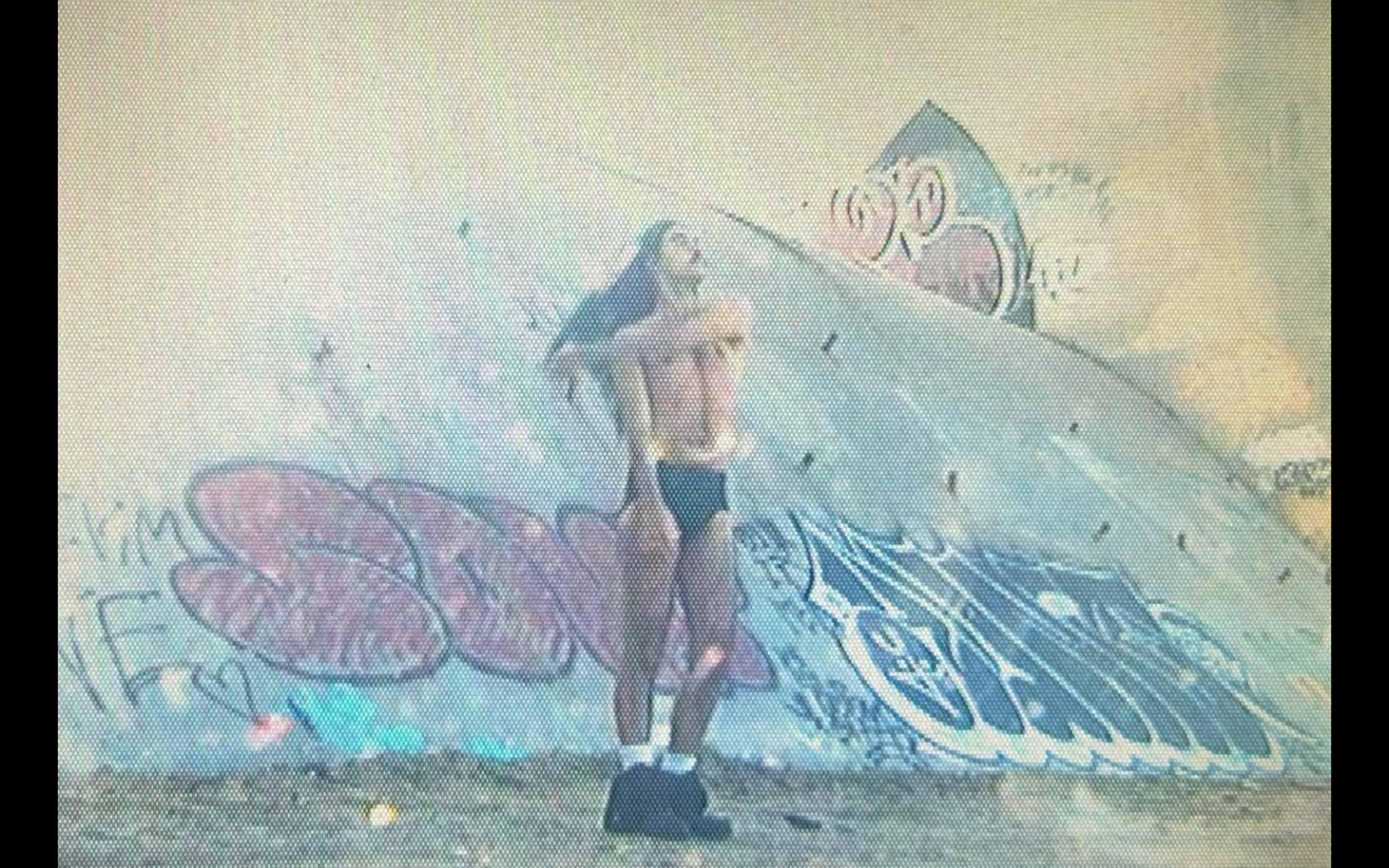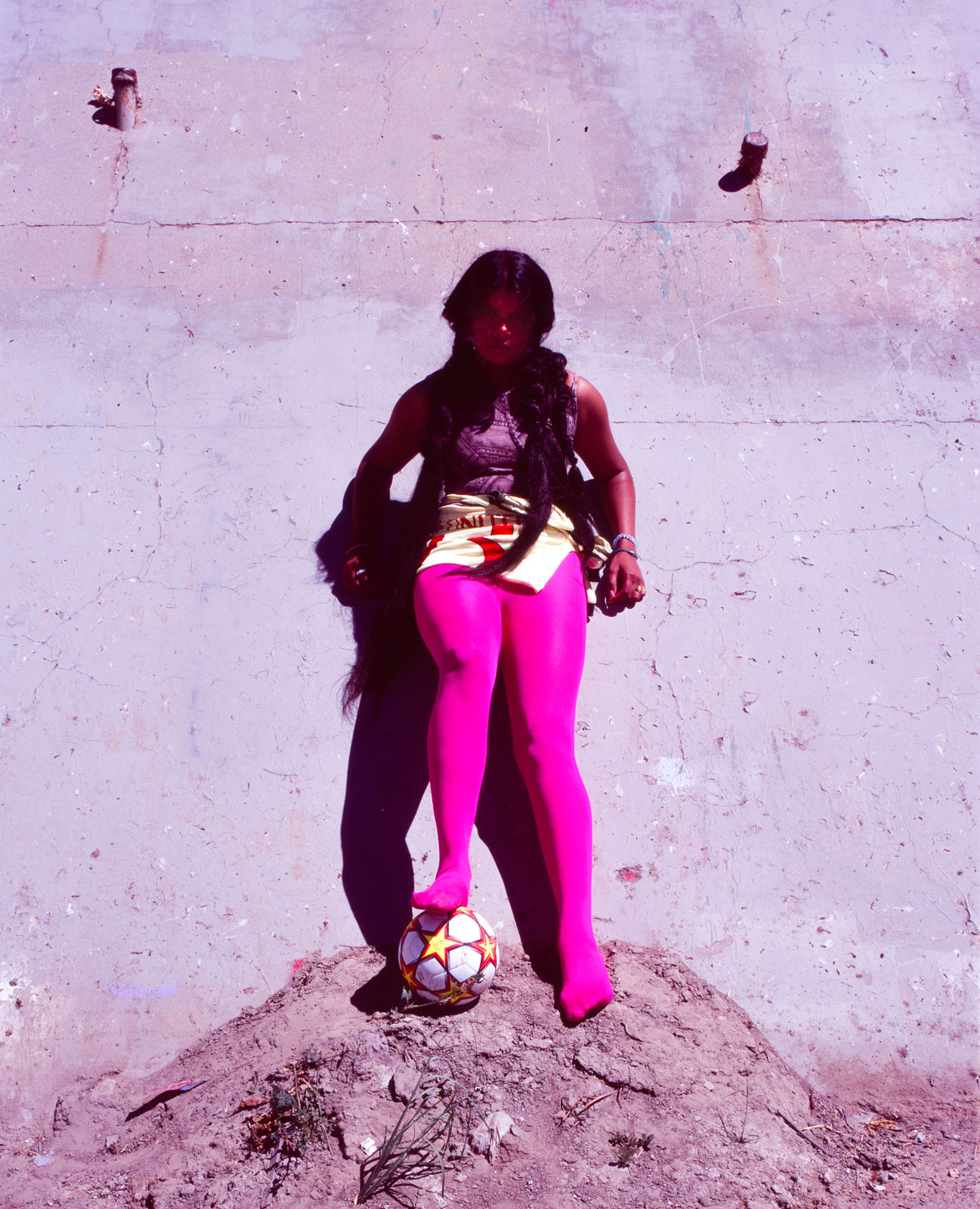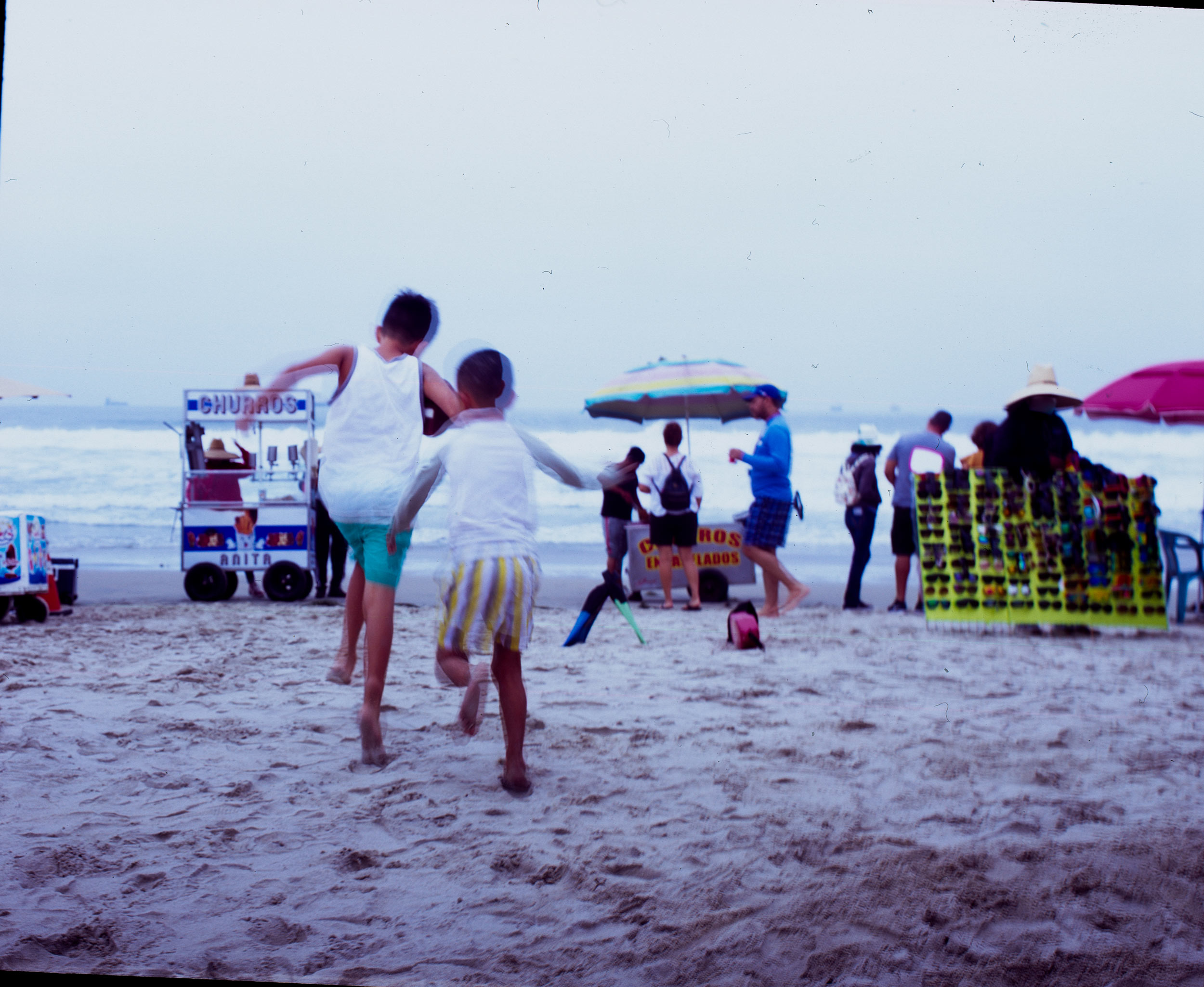The artist’s first photobook is diaristic and investigative, marking stages in the evolution of the their character, and exploring grounds for its further expansion
For Jester Bulnes, a self-portrait doesn’t necessarily require the physical self. The artist’s forthcoming photo book, DENTRO, is an autobiographical exploration, imagining the artist through the images they take of others. Says Elisa Sue Young Park in the book’s introduction, “Bulnes is incredibly forthright in their aesthetic judgments, which manifests in an instinctual ability to recognize themself in varying and diverse forms.”
DENTRO is diaristic and investigative, marking stages in the evolution of the artist’s character, and exploring grounds for its further expansion. A fascination with twos is central to Bulnes’s practice; they play with parallels, pairs, and the in-between with each image they render. That concept is principal to their own identity, one that emerged over that period between adolescence and adulthood, where seemingly contradictory selves may come to be—college. While studying fine art at UCLA, Bulnes was confronted with branching versions of themself, which ultimately found form in DENTRO.
Ahead of the book’s release on March 23, at Palm Grove Social in Los Angeles, Bulnes joins Document to reflect on the making of DENTRO—and not disparately, the making of themself.
Megan Hullander: How did the concept for DENTRO come about?
Jester Bulnes: For my 18th birthday, I put together my first-ever print project. It was a self-titled zine, and I [hosted] a corresponding DIY art show of sorts to celebrate. That was the first time I had thought about the relationships between my photographs, [rather than] working with singular images. I knew that the next project I wanted to create was going to be a book: hardcover, larger, and filled with many more photographs.
It’s really important to me that my work exists beyond something you might scroll past online, where there are thousands of photos at our disposal. I want, and hope, that the images can be felt. I want people to look at them and feel inspired to create something of their own. There’s something special about being able to see art in person, and getting to flip through a collective body of images—something tangible. This project came as an antithesis to the internet—an effort to think about my work more seriously as a young artist.
Megan: Where did the title derive from?
Jester: It’s annoying, because I can’t actually pinpoint the exact moment when I knew that the book would be called DENTRO. It must have come from a song, or I read it somewhere. I do remember, though, having written it out several times and double-checking the translation. It translates to ‘within’ in Spanish; I immediately fell in love. I jokingly like to say that the title came from ‘within.’
Megan: Where were the images in the book taken? How has each space informed your sense of self, personally and artistically?
Jester: Most of the images, if not all, were taken in Los Angeles, which is where I am from. The others were taken in Mexico. Having grown up in LA—and more specifically Downey, this weird, urban-city mixture—allows for me to exist in the city in a really honest way. The images feel very LA—or, at least, my version of it—while simultaneously being tied to no specific location. I tend to shoot mostly outside in urban spaces, which feels very reflective of the areas I grew up in. I’m naturally drawn to the rawness of these places.
Working with both these natural spaces and graffiti-tagged architectural sites allowed me to confront my existence in the world as a queer, brown body. LA’s history with Latino people empowered me to directly explore that part of my identity. I’m thankful for this project because it finally allowed me to make my way to Mexico, to start photographing there, as well. As someone who comes from an immigrant household, and is both Mexican and Salvadoran, there’s a lot of unexplored culture I am slowly trying to navigate. I am still learning a lot.
Megan: Is there any narrative intention behind DENTRO? How do the images function as a body of work in ways they might not individually?
Jester: The book is very personal to me, and functions like a visual diary. I remember telling people I was making a book, and they would be like, ‘You’re writing a book? What’s it about?’ I like to think that DENTRO serves as an autobiography. All of the images were carefully curated and layed out in a way that I think are really reflective of who I am and where I come from, while still allowing me to explore different parts of myself.
“I like to think of my photographs as self-portraits through the use of others. There is an emphasis on community and shared identities.”
Megan: What do you think this project touches on or engages with that you may not have been able to access earlier in life?
Jester: I think there’s quite a bit that this project allowed me to confront. I was raised in a religious household, and that wasn’t necessarily a problem until I became aware of my queerness. I was closeted until around the age of 18, when I unexpectedly came out to both my mom and myself in a very awkward car ride. Because of this, I had to move out, and was faced with the reality of being on my own. Thankfully, I have a bit of a better relationship with my family, but it’s definitely still challenging to navigate.
There was finally nothing holding me back. Through the making of this book, I got to explore my relationship [with] queerness in a way that I never had the chance to while growing up—something as simple as working with models who were openly gay, and having lots of conversations with friends. This book even got me to question my gender identity, [along with] being accepted into a community I had been longing for, which led me to coming out and identifying as non-binary. Throughout more recent years, I have become much more comfortable in my femininity because of the garments I was using for the making of these photographs.
I was also questioning and learning more about my Latino identity. My mom is Mexican and my dad is from El Salvador, but growing up I never felt Latino enough for those I was surrounded by, because I didn’t speak Spanish. Obviously, I wasn’t white [either], so I struggled with my place in the world that way, too. I think there are a lot of people who can relate to that experience, and I wanted to challenge those feelings.
Megan: Where do you see yourself in the subjects you captured?
Jester: I like to think of my photographs as self-portraits through the use of others. There is an emphasis on community and shared identities—queer and POC. It’s important to me that the people I get to photograph are those who are not often seen in popular media. As someone who is marginalized myself, I want to always try to uplift other minorities around me as best as I can.
Megan: How does your work in fashion inform your approach to photography? What, for you, is exciting about merging modes of fashion portraiture with documentary photography?
Jester: Fashion is honestly kind of the starting point for a lot of the photographs. I have quite the shopping obsession, and I use all my own clothes for shoots. But beyond just styling, there are a lot of designers who I am inspired by—Willy Chavarria, Laura and Deanna Fanning, and Victor Barragán—especially in thinking about color, textures, and asymmetry. A lot of those details inform my work and how I approach a shoot. Either there’s someone in mind I want to photograph, and I build an outfit around them, or the outfit comes first and I imagine who would make the most sense wearing it.
Being able to merge the worlds of fashion and documentary photography makes me feel embedded in the photographs, and generates this sense that I am not just photographing someone, but also creating an image. I’m interested in the drama fashion allows me to explore and express, but I never want it to feel too theatrical, and I think that’s where my interest in documentation keeps me grounded. It’s this push and pull—a dance—that creates this visceral scene of beauty that is still rooted in reality.

















